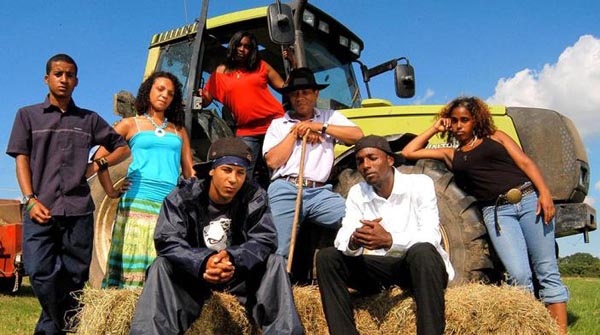Promoting Youth Participation in Agriculture

 It’s no secret that South Africa has a youthful population and whilst there are concerns over its large demographic dividend I am of the strong opinion that as much as it presents challenges it also presents a wide range of opportunities. Western Europe for instance is experiencing a labour shortage. Statistics reveal that by 2030 its manpower will have shrunk by 12 million people. These figures also further reveal that in the summer of 2012 there were over 4 million unfilled job vacancies across Europe but beyond our own colourful figures there is a lot of ground work that need to be put in place to capitalize on our demographic dividend and part of the process will be the utilization of our youthful workforce in areas like innovation and entrepreneurship. Agriculture is also a space where young people should be crucial role players. The sector currently contributes 12% to the GDP, whilst these are good figures there is still room for growth and part of that growth could be attained by stimulating participation of the youthful workforce as most farmers in SA are usually above 60 years of age and young people can incorporate innovation and technology to stimulate growth in this sector. I had the privilege of attending the National Agriculture Youth Dialogue, an event organized by the National Agricultural Marketing Council in Pretoria and I thought I should share my thoughts on some of the key issues I think need to be noted to help promote and stimulate youth participation in agriculture.
It’s no secret that South Africa has a youthful population and whilst there are concerns over its large demographic dividend I am of the strong opinion that as much as it presents challenges it also presents a wide range of opportunities. Western Europe for instance is experiencing a labour shortage. Statistics reveal that by 2030 its manpower will have shrunk by 12 million people. These figures also further reveal that in the summer of 2012 there were over 4 million unfilled job vacancies across Europe but beyond our own colourful figures there is a lot of ground work that need to be put in place to capitalize on our demographic dividend and part of the process will be the utilization of our youthful workforce in areas like innovation and entrepreneurship. Agriculture is also a space where young people should be crucial role players. The sector currently contributes 12% to the GDP, whilst these are good figures there is still room for growth and part of that growth could be attained by stimulating participation of the youthful workforce as most farmers in SA are usually above 60 years of age and young people can incorporate innovation and technology to stimulate growth in this sector. I had the privilege of attending the National Agriculture Youth Dialogue, an event organized by the National Agricultural Marketing Council in Pretoria and I thought I should share my thoughts on some of the key issues I think need to be noted to help promote and stimulate youth participation in agriculture.
Generalization of the Youth Demographic
One of the key flaws when trying to collate factors giving rise to poor interest in agriculture among the country’s youth is the generalization of the “youth” demographic. Attitudes of young people towards agriculture vary extensively and some of the distinguishing factors are largely geographic location and land ownership. Even with campaigns to stimulate interest or raise awareness to the positive prospects of agriculture, there is a crucial need to segment the “youth” so the right message can be communicated to the right audience. The reality of the matter is youth who have been exposed to agriculture e.g those from rural settings where subsistence farming is largely dominant will probably understand the value of agriculture and its role as a key component of food security but might feel that it is not very progressive as most people in their communities might still be subsistence farmers who are struggling to not only carry their financial needs but also progress from subsistence farming to commercial farming. On the other hand youth in urban settings might have little or no exposure to agriculture which requires a different marketing approach.
Perceptions Vs Culture
Whilst South Africa’s agricultural sector contributes largely to the GDP of SA’s economy one of the key challenges is that black South Africans constitute minimally to this white dominated sector. Black South Africans do not have a very cultivated agricultural culture in comparison to other African countries where a large number of citizens rely on the land for survival even those in urban settings. Acknowledging this fact is very crucial when trying to stimulate conversation and implement strategies in SA focusing on stimulating youth participation. There is a lot of talk about “youth perceptions” and the reality of the matter is that the source of these “perceptions” is the absence of the culture. The best point of reference to draw an understanding of the SA black agricultural culture is the prominence of Black Peri Urban farming in SA which is at a minimum in comparison to countries like Zimbabwe and Malawi.There are probably tangiable factors derailig this exercise but this gives an indication to the lack thereof an agricultural culture among the black urban communities. The debate around the value of Black Peri Urban farming in other African countries might be subtly settled with the argument around the contribution of subsistence farming to the economy but as a pointer this also gives a rough indication that the larger urban population of 53.7% is minimully exposed or engaging in any agricultural activity and again the conclusion being that the problem is not just a “youth” problem. Now, where do we start cultivating a culture of agriculture? In schools and communities particularly urban settings where most young people have never been exposed to farming. Adults need to learn the value of agriculture so that they can share this knowledge with the youth. Some teachers and community leaders themselves have never been exposed to any agriculture in their lives maybe they could be the source of these “perceptions”
Urbanization
It’s also important to explore the factors pushing the youth to migrate to urban settings from rural or farming communities. Understanding this would help streamline campaigns that aim at reaching youth in urban areas to go back/ or go to rural or farming communities to practise agriculture. Some of the key reasons might be poor access to markets, saturated markets, little opportunities and poor infrastructure. The process of making agriculture look cool is largely the ability to market the beauty of the lifestyle in a farming community. If accesing basic services like water, roads, sanitation and lighting is a challenge in a setting the odds of young people leaving the city and settling in such areas are at a minimum.
Policies
The youth need to be part of dialogues focusing on agricultural policies. If we acknowledge their vast population dynamics surely we need to include them in the formulation and implementation of policies affecting their future. In addition whilst there is also a need to look into new policies that best reflect the current economic, social and political climate equal focus needs to be invested in the implement of these policies. Looking back a number of policies have not seen the light of the day.
Career Guidance in schools
The absence of effective career guidance in schools is one huge component that derails youth participation in Agriculture. The poor promotion of agriculture in schools as a tertiary study unit is another key component that adds to the poor interest. How can this be addressed? Institutions that promote agriculture need to hold career expos in rural and urban settings to promote agriculture as a study unit, they need to make electronic and print media available to the learners.
Employability of Agricultural Graduates
One of the most prominent questions young people pose is their employment prospects after attaining an agriculture qualification. Where will I get employed? Will I work as a farm manager? Will I work as a foreman? Will I have to leave the City? What about the racial devide in the sector? There are usually more questions than answers to these concerns and I think it’s extremely important that as clear as is it that agriculture is a key component to the economy, the risk factors for learners taking this study unit should also be minimized. Agriculture should thus become a specialized study unit. Students taking agriculture study units should access land and capital to practice farming after the completion of their study units. Most young people are not so keen about taking a study unit that might see them unemployed or idle particularly those in urban areas without land.
The Land issue
Land, land, land where will I farm? For youth in rural communities who have access to land this might not be a very huge concern but for youth without land particularly those in urban settings this is still a huge concern and its critical that we find ways to make land available for youth who want to venture into agriculture.
Capital
Funding is also a very crucial element. Most young people do not have access to funding for agricultural purposes. If there are institutions that assist with funding there is a need to promote them better so more young people can access these services. The funding requirements should also be streamlined to suit the profile of most young people who dont have collateral. Programmes targeting subsistence farmers Subsistence farmers in rural communities are usually the point of reference for most black South Africans who have little or no exposure to agriculture or successful black farmers and the picture of the plight of most black rural farmers is not a very positive one .It’s extremely important that small scale farmers particularly those in rural settings access capital, skills training and resources to be able to grow their activities, generate sustainable income from their operations and also play a crucial role in job creation and community level. Access to Information A lot of young people struggle to access information on agriculture. Massive emphasis need to be invested in making information easily accessible in schools, libraries and local municipalities. There is also equal demand for the information to be in languages and grammar the youth understand.
Profiling
I still think it’s extremely important to profile existing agriculture students so we can have an understanding of Who they are? Why they chose to study agriculture? Originality e.g rural or urban settings? Do they have an agricultural background or exposure? Do they have access to land? Similar questions should be asked about existing farmers so that marketing and promoting agriculture can be segmented and streamlined to existing “markets” not solely but extensively. Identifying the source particularly the location and the profile of the youth farmers will ease the strain of having campaigns that targeting “everyone”, which could easily be targeting no one. A typical example is that even though a study institution promoting a theology qualification acknowledges the fact that Christianity is a dominant religion in South Africa there is still a need to streamline its marketing approach and focus primarily on certain markets e.g church bodies and missionary organizations which are spaces were potential theology learners usually emerge from . I think its also crucial to come to an understanding that agriculture is not for everyone and campaigns should not target “all youth”
Marketing and Media
One of the other constraints is the poor visibility of agriculture in media. There is a need for more coverage in print and electronic media, radio and television, local and national stations. Programming needs to be shown during prime time, if expensive at least when young people are watching. There is also a need to make programming that makes agriculture look COOL, the lifestyle that is. We also need testimonials of successful black farmers. The internet particularly social media can also be good tools to promote agriculture if used effectively. With the surge of internet access among the SA Youth, institutions promoting agriculture need to acknowledge the youth’s shift from traditional mediums especially newspapers thats are usually costly. Nowadays most young people get their information from the internet so the reality of the matter is that the internet would be one of the best platforms to market and promote agriculture if you want to reach the youth demographic.
By Bruce Dube




